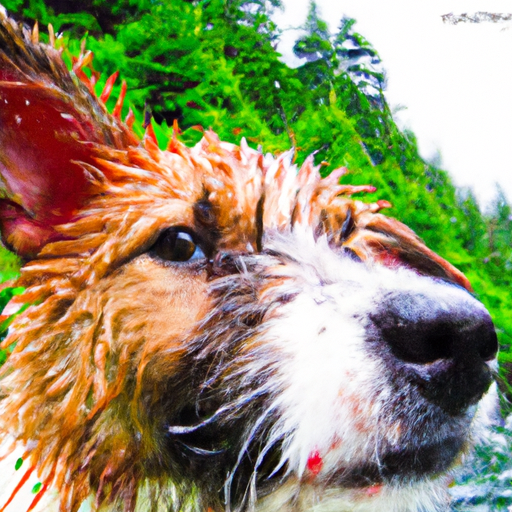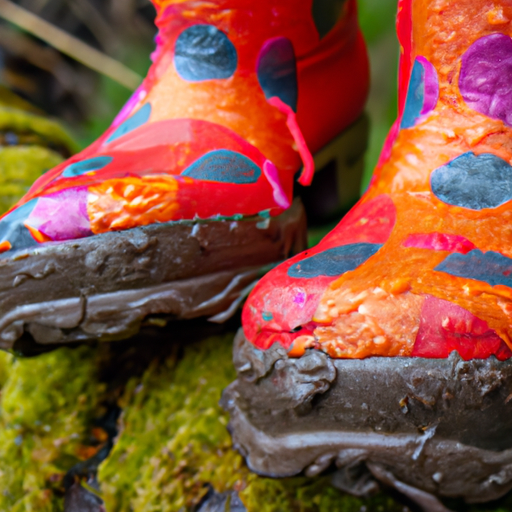Have you ever wondered how to teach your adorable puppy to greet strangers in a polite and friendly manner? Well, fret not, because we've got you covered! In this article, we will share some effective tips and techniques on how to train your furry friend to become the perfect greeter. From basic obedience training to socialization exercises, you'll discover the key ingredients to ensure your puppy's interactions with strangers are enjoyable for everyone involved. So, let's dive right in and explore the wonderful world of polite puppy greetings!
Understanding Proper Puppy Greetings
Importance of teaching polite greetings
Teaching your puppy proper greetings is essential for their overall well-being and for creating positive interactions with people and animals. Polite greetings ensure that your puppy behaves calmly and respectfully, which can help prevent potential problems and make social interactions more enjoyable for everyone involved. By teaching your puppy how to greet others politely, you are setting a foundation for good manners and proper behavior throughout their life.
Recognizing inappropriate behavior
It is crucial to be aware of what constitutes inappropriate greetings from your puppy. These behaviors can range from excessively jumping on people to barking or growling at strangers. Understanding the signs of inappropriate behavior can help you intervene and address the issue effectively. By recognizing these behaviors, you can take the necessary steps to correct them and promote positive interactions for your puppy.
Socializing Your Puppy
Exposing your puppy to different environments
The early months of your puppy's life are a critical period for socialization. Exposing your puppy to a variety of environments is important to help them become comfortable and confident in different settings. This exposure can include taking your puppy for walks in the neighborhood, visiting parks, or even arranging playdates with other dogs. The more your puppy experiences different environments, the better equipped they will be to handle new situations in the future.
Introducing your puppy to new people and animals
Introducing your puppy to new people and animals is an essential part of socialization. It helps them develop positive associations and learn how to interact appropriately with others. Start by introducing your puppy to friends and family members, making sure the encounters are positive and controlled. Gradually, you can expand these introductions to include unfamiliar individuals, always prioritizing the safety and comfort of your puppy.
Teaching Basic Commands
Establishing basic commands
Teaching your puppy basic commands like sit, stay, and come, not only helps with their overall obedience but also assists in proper greetings. These commands allow you to have control over your puppy's behavior and ensure they respond appropriately when meeting new people or animals. Start by practicing these commands in a distraction-free environment, gradually adding more distractions as your puppy becomes more proficient.
Reinforcing obedience through positive reinforcement
Using positive reinforcement is a highly effective method for teaching your puppy basic commands. Reward your puppy with treats, praise, and attention when they obey a command correctly. This positive association encourages your puppy to repeat the behavior, reinforcing their training and making them more likely to respond appropriately in different situations. Consistency and patience are essential when using positive reinforcement, as it helps your puppy understand what is expected of them.
Teaching Boundaries
Teaching your puppy personal space
Respecting personal space is a vital aspect of polite greetings for any dog. Teaching your puppy to understand and respect personal boundaries helps prevent behaviors such as jumping or excessive licking. Begin by setting clear boundaries for your puppy, encouraging them to sit or stand calmly when greeting someone. Reward them for maintaining their personal space, reinforcing the positive behavior.
Using redirection to prevent jumping on strangers
Jumping on strangers can be an issue when your puppy is excited to greet someone. Redirection can be a helpful technique to prevent this behavior. When your puppy attempts to jump, redirect their attention to a more appropriate behavior, such as sitting or offering a paw. Reward and praise your puppy for the desired behavior, reinforcing that sitting calmly is the proper way to greet someone.
Positive Reinforcement Training
Using treats and rewards to encourage desired behavior
Positive reinforcement training involves rewarding your puppy for desired behavior using treats, praise, or toys. When it comes to polite greetings, use treats and rewards to encourage your puppy to remain calm and respectful during interactions. Whenever your puppy behaves appropriately while meeting new people or animals, offer them a reward immediately. Over time, your puppy will associate polite greetings with positive experiences and will be more inclined to repeat the behavior.
Avoiding punishment or negative reinforcement
It is essential to avoid punishment or negative reinforcement when training your puppy to greet strangers politely. Punishing your puppy can create fear and anxiety, leading to further behavioral issues. Instead, focus on rewarding and reinforcing the desired behavior, redirecting any inappropriate behavior, and providing clear guidance to your puppy. Positive reinforcement creates a positive learning environment, making the training process more enjoyable for both you and your puppy.
Implementing Controlled Greetings
Practicing controlled greetings with friends and family
To practice controlled greetings, start with familiar individuals such as friends and family members. Set up scenarios where your puppy can greet them while maintaining proper manners. Encourage your puppy to sit or stand calmly and reward them for their appropriate behavior. Gradually increase the difficulty of these controlled greetings by introducing distractions or having your puppy meet individuals they are less familiar with.
Gradually introducing unfamiliar individuals
Once your puppy is comfortable with controlled greetings involving friends and family, it's time to introduce unfamiliar individuals. Ensure that these encounters are controlled and safe for both your puppy and the stranger. It's important to remember that not everyone may want to interact with your puppy, so always ask for permission before allowing your puppy to approach a stranger. This gradual introduction helps your puppy develop social skills while still respecting the boundaries of others.
Consistency and Repetition
Being consistent with training methods
Consistency is key when teaching your puppy proper greetings. Use the same commands, reward system, and techniques each time you engage in training sessions. Consistency helps your puppy understand what is expected of them and reinforces the desired behavior. Establishing a consistent routine with training will improve your puppy's understanding of polite greetings and make the training process more efficient.
Repeating exercises to reinforce polite greetings
Repetition plays a crucial role in reinforcing polite greetings. Practice the exercises regularly, ensuring that your puppy has ample opportunities to master the desired behavior. It is important to be patient and understand that puppies learn at their own pace. By repeating the exercises, you are helping your puppy develop a strong foundation for polite greetings, increasing their chances of success in real-life situations.
Managing Expectations
Understanding that not all strangers may want to interact
It is essential to understand that not everyone your puppy encounters will want to interact with them. Respect the boundaries and desires of others, and always ask for permission before allowing your puppy to approach a stranger. By managing your expectations and being considerate of others' preferences, you can prevent your puppy from becoming anxious or overexcited in situations where interaction is not appropriate. This understanding promotes positive experiences for both your puppy and the people they encounter.
Allowing your puppy to choose when to approach
While it is important to teach your puppy proper greetings, it is also crucial to give them the freedom to choose when to approach someone. Forcing interactions can create anxiety and discomfort for your puppy, ultimately leading to undesired behaviors. Respect your puppy's body language and cues. Allow them to approach strangers at their own pace, ensuring a positive and comfortable experience for both your puppy and the person they are greeting.
Seeking Professional Help
Consulting a professional dog trainer
If you are experiencing difficulties in teaching your puppy proper greetings, consider consulting a professional dog trainer. They have the expertise and experience to assist you in addressing specific behavioral issues and creating a tailored training plan for your puppy. A professional trainer can provide guidance and support throughout the training process, helping you and your puppy achieve the desired results.
Options for specialized behavior training
In some cases, specialized behavior training may be necessary for addressing specific issues related to your puppy's greetings. If your puppy exhibits severe fear or anxiety, or if they display aggressive behaviors during greetings, it is crucial to seek specialized help. Certified behaviorists or trainers with experience in behavioral issues can provide the necessary guidance and implement appropriate strategies to help your puppy overcome these challenges.
Addressing Fear and Anxiety
Recognizing signs of fear and anxiety
Fear and anxiety can greatly impact your puppy's ability to greet strangers politely. It is important to recognize the signs of fear and anxiety, such as trembling, panting, excessive barking, or attempts to hide. If your puppy consistently displays these signs during greetings, it may indicate a deeper issue that needs to be addressed. Understanding and acknowledging these signs will allow you to seek professional help and provide your puppy with the support they need.
Working with a professional to overcome these issues
If your puppy experiences fear or anxiety during greetings, it is crucial to work with a professional to overcome these challenges. A professional trainer or behaviorist can help identify the underlying causes of fear and anxiety and create a tailored plan to address them. They will provide you with strategies and techniques to help your puppy become more confident and comfortable in social interactions, ultimately enabling them to greet strangers politely and without fear.
In conclusion, teaching your puppy to greet strangers politely is an important aspect of their overall training and socialization. By understanding the importance of polite greetings, recognizing inappropriate behavior, and implementing positive reinforcement techniques, you can ensure that your puppy develops good manners and respectful behavior. Through exposure to different environments, controlled introductions to people and animals, and consistent training, your puppy will learn to greet strangers in a calm and appropriate manner. Remember to manage your expectations, respect personal boundaries, and seek professional help when needed. With patience, consistency, and positive reinforcement, you can help your puppy become a confident and well-mannered companion.






